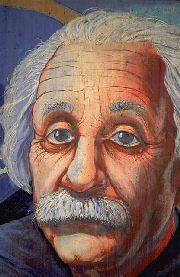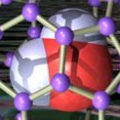
A quantum theory of gravity could be within reach, as scientists funded by the European Space Agency (ESA) report measuring the gravitational equivalent of a magnetic field. Presenting their results at a one-day conference at ESA’s European Space and Technology Research Center (ESTEC) in the Netherlands earlier this month, the scientists involved said that under special conditions the gravitational effect was far greater than expected, and therefore contradicted Einstein’s Theory of General Relativity that states such gravitational effects should be negligible.
Moving electrical charges and objects create magnetic and gravitomagnetic fields respectively, but Einstein claimed that the effect of the latter would be barely perceptible. Not so, says researcher Martin Tajmar and his colleagues, who believe that the effects of gravitomagnetic fields could explain the anomalies seen in high-precision mass measurements of Cooper-pairs (carriers in superconductors) and their prediction via quantum theory.
The team detected what has been dubbed the “Gravitomagnetic London Moment” by placing small acceleration sensors at various locations close to the spinning superconductor. Once the superconductor has reached a particular speed, claim the team, the sensors pick up an acceleration field outside the superconductor that appears to be produced by gravitomagnetism.
“This experiment is the gravitational analogue of Faraday’s electromagnetic induction experiment in 1831. It demonstrates that a superconductive gyroscope is capable of generating a powerful gravitomagnetic field, and is therefore the gravitational counterpart of the magnetic coil. Depending on further confirmation, this effect could form the basis for a new technological domain, which would have numerous applications in space and other high-tech sectors,” says researcher Clovis de Matos.
While 100 millionths of the acceleration due to Earth’s gravitational field may not seem particularly astounding, the Gravitomagnetic London Moment detected by the team is a staggering one hundred million trillion times larger than what Einstein’s Theory of General Relativity predicts. The results were so astonishing that the team did not believe the results themselves, but it soon turned out that the inconceivable had entered the realms of reality. “We ran more than 250 experiments, improved the facility over 3 years and discussed the validity of the results for 8 months before making this announcement. Now we are confident about the measurement,” says Tajmar, who hopes that other scientists will now repeat his team’s experiment to verify the results.
In addition to the team’s experimental results, Tajmar has spent some time fine-tuning the theoretical aspects of the Gravitomagnetic London Moment. When the team used equations that allowed for force carrying particles (gravitons) to gain mass, they found that the gravitomagnetic force could be modeled. “If confirmed, this would be a major breakthrough,” says Tajmar, “it opens up a new means of investigating general relativity and its consequences in the quantum world.”








Comments are closed.